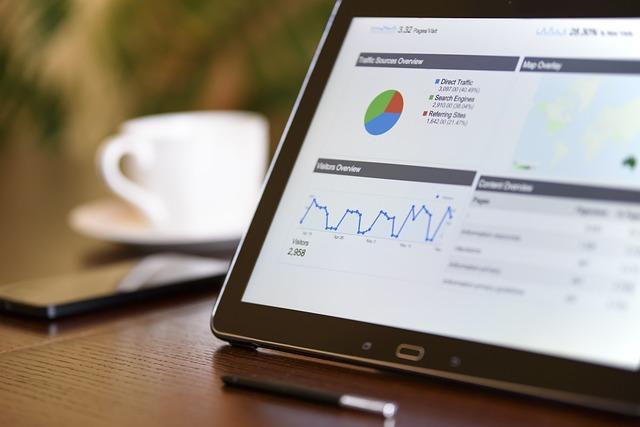In the intricate world of finance, where numbers dance to the rhythm of risk and reward, understanding the language of debt is paramount. Enter the realm of debt ratios—a set of powerful tools that, when wielded with precision, can illuminate the shadows of credit risk. As businesses and individuals alike navigate the complex landscape of borrowing and lending, the ability to assess creditworthiness becomes not just a skill, but an art form. This article delves into the essence of debt ratios, unveiling their secrets and showcasing their indispensable role in credit risk management strategies”>credit risk assessment. Whether you’re a seasoned financial analyst or a curious newcomer, prepare to embark on a journey that will enhance your understanding and mastery of these vital metrics. With authority and clarity, we will guide you through the nuances of debt ratios, empowering you to make informed decisions in the ever-evolving tapestry of financial risk.
Understanding the Core Debt Ratios in Credit Risk Analysis
In the intricate world of credit risk analysis, understanding debt ratios is crucial for assessing a borrower’s financial health. These ratios provide a snapshot of a company’s leverage and its ability to meet financial obligations. Key debt ratios to consider include:
- Debt-to-Equity Ratio: This ratio measures the relative proportion of shareholders’ equity and debt used to finance a company’s assets. A high ratio indicates greater leverage and potentially higher risk, while a lower ratio suggests a more conservative approach to financing.
- Interest Coverage Ratio: By comparing earnings before interest and taxes (EBIT) to interest expenses, this ratio assesses a company’s ability to pay interest on its debt. A higher ratio indicates stronger financial health and a lower risk of default.
- Debt-to-Asset Ratio: This ratio shows the percentage of a company’s assets that are financed by debt. It helps in evaluating the overall financial leverage and the potential risk involved in the company’s capital structure.
These ratios serve as vital tools for credit analysts, offering insights into the sustainability of a company’s debt levels. By scrutinizing these figures, analysts can make informed decisions, ensuring a balanced approach to credit risk management.

Decoding the Debt-to-Equity Ratio for Strategic Decision Making
In the intricate world of financial analysis, the debt-to-equity ratio stands as a pivotal metric, providing a window into a company’s financial leverage and stability. This ratio, calculated by dividing a company’s total liabilities by its shareholder equity, serves as a critical tool for evaluating a company’s ability to meet its long-term obligations. When utilized effectively, it can inform strategic decision-making by highlighting the balance between debt and equity financing. Companies with a high debt-to-equity ratio may be leveraging debt to fuel growth, but this can also indicate potential risk if earnings are insufficient to cover interest payments.
For strategic decision-making, consider the following when analyzing the debt-to-equity ratio:
- Industry Norms: Different industries have varying standards for acceptable debt levels. Compare the ratio against industry benchmarks to assess risk accurately.
- Growth Potential: A higher ratio might be justified if the company is in a high-growth phase with robust revenue projections.
- Interest Coverage: Evaluate the company’s ability to service its debt by examining its interest coverage ratio in conjunction with the debt-to-equity ratio.
- Market Conditions: Economic downturns can amplify the risks associated with high leverage, making it crucial to factor in current market conditions.
Understanding these elements can empower stakeholders to make informed decisions, balancing risk and opportunity effectively.

Mastering the Interpretation of Interest Coverage Ratios
When diving into the world of debt ratios, the interest coverage ratio stands out as a critical indicator of a company’s financial health. This ratio, calculated by dividing a company’s earnings before interest and taxes (EBIT) by its interest expenses, provides a snapshot of how easily a company can meet its interest obligations. A higher ratio suggests a robust ability to cover interest payments, indicating lower credit risk. Conversely, a lower ratio may signal potential financial distress, raising red flags for creditors and investors alike.
Understanding this ratio involves more than just numbers. Consider the following when analyzing it:
- Industry Benchmarks: Compare the ratio against industry standards to gauge relative performance.
- Trends Over Time: Examine historical data to identify any concerning patterns or improvements.
- Economic Context: Factor in the broader economic environment, as economic downturns can affect a company’s ability to generate consistent earnings.
By mastering the nuances of the interest coverage ratio, financial analysts can make informed decisions, safeguarding investments and ensuring strategic financial planning.

Leveraging Debt Ratios for Enhanced Credit Risk Mitigation
In the realm of credit risk assessment, understanding and utilizing debt ratios can significantly enhance risk mitigation strategies. Debt ratios, such as the debt-to-equity ratio and debt-to-assets ratio, serve as critical indicators of a borrower’s financial health and leverage. These ratios offer insights into how a company finances its operations and the proportion of debt used relative to its equity or assets. By evaluating these metrics, credit analysts can gauge the potential risk associated with lending to a particular entity.
- Debt-to-Equity Ratio: This ratio highlights the balance between debt and equity financing. A higher ratio suggests greater reliance on debt, which could indicate higher risk, especially in volatile markets.
- Debt-to-Assets Ratio: This measures the percentage of a company’s assets that are financed by debt. A lower ratio typically signifies a more conservative financial structure, potentially reducing credit risk.
Integrating these ratios into credit risk models allows for a more nuanced understanding of a borrower’s financial position. By doing so, lenders can make informed decisions, tailoring their risk management strategies to align with the financial profiles of their clients. In essence, leveraging these financial metrics not only aids in identifying potential red flags but also empowers lenders to optimize their credit portfolios effectively.





